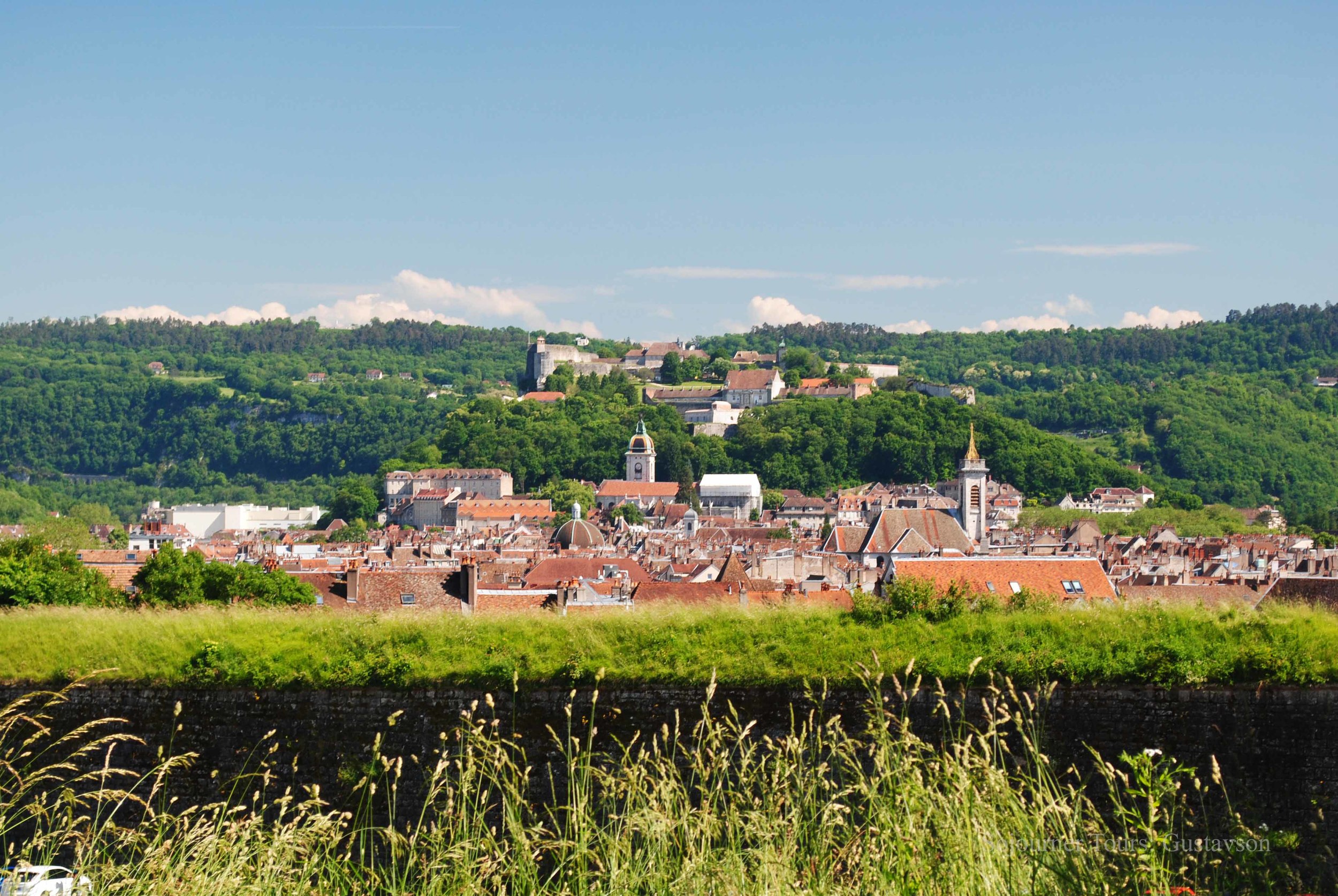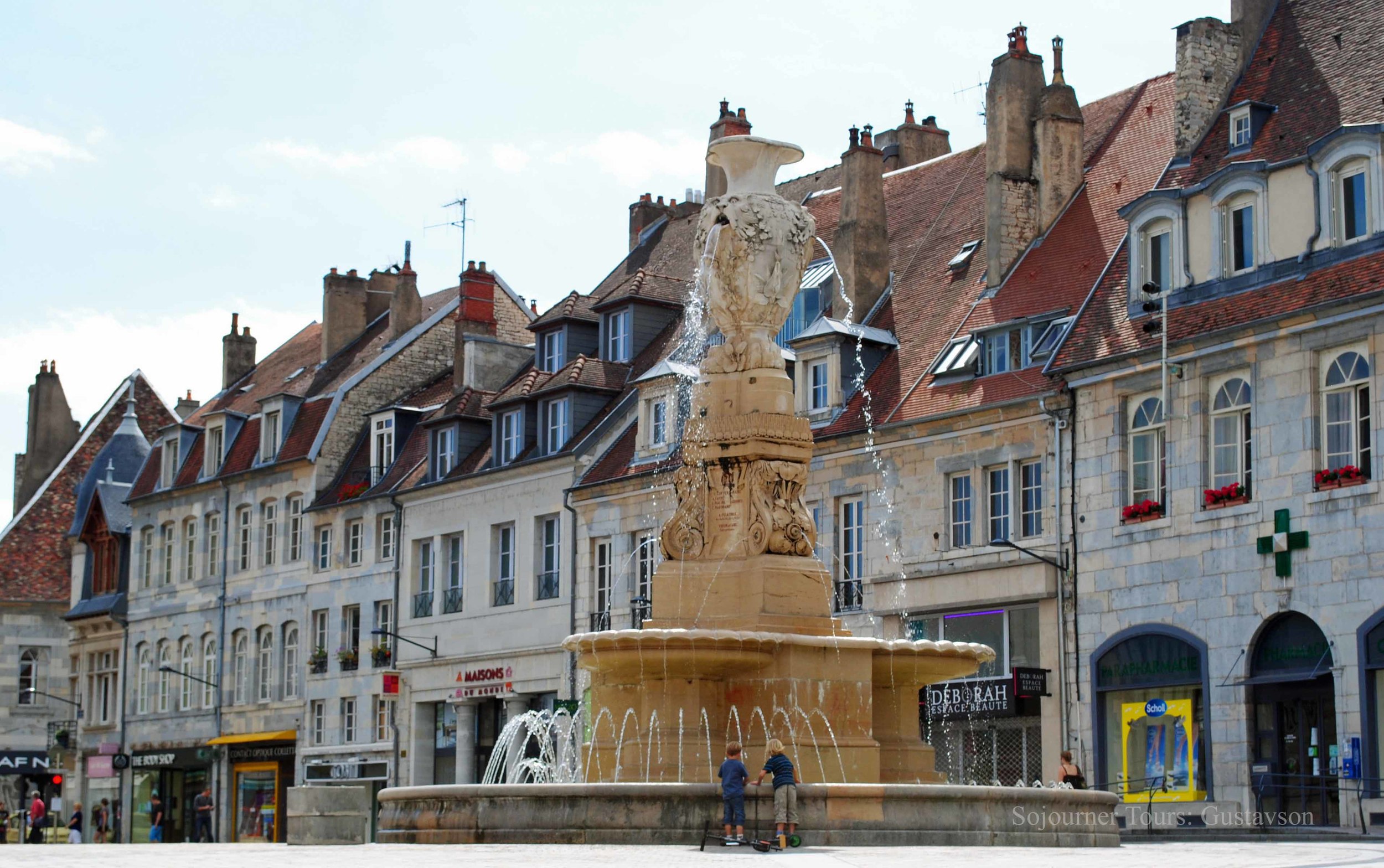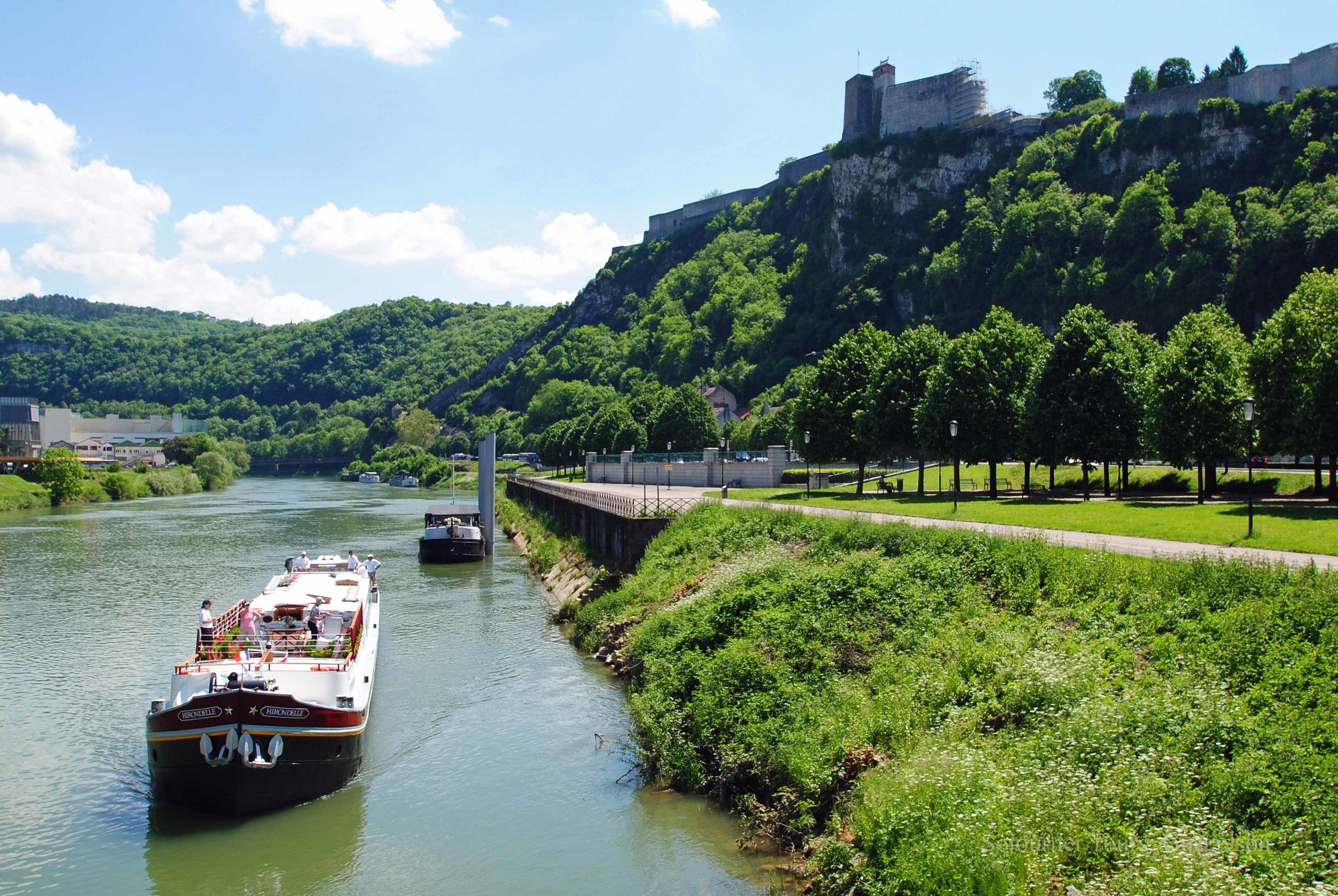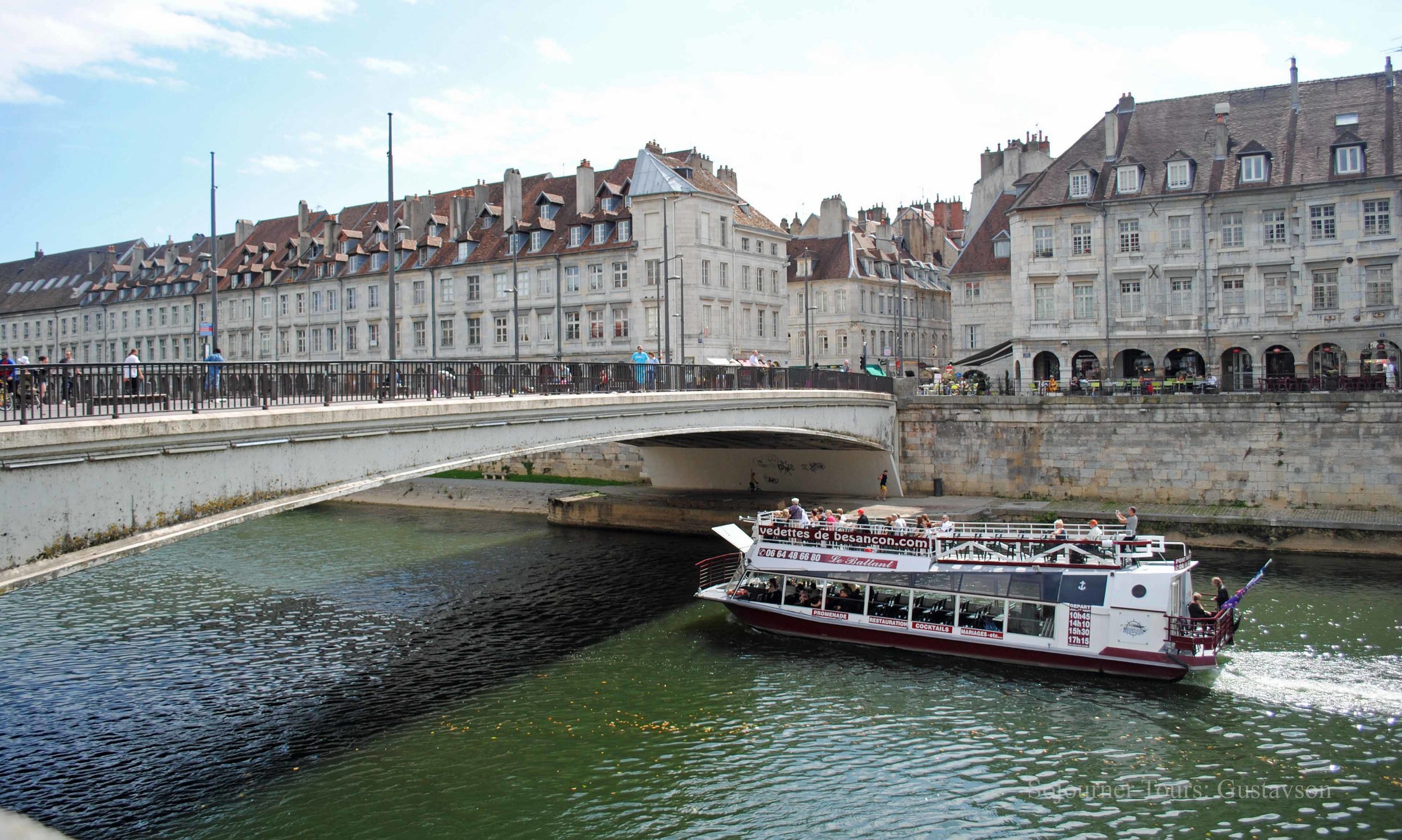French-Swiss Borderland TourS Base: Besançon
“Besançon has a historic centre which charms almost instantly. From the sloping rooftops and 18th-century facades of the Place de la Révolution to the cobbled courtyards and sweeping external staircases of the townhouses on the rue Mégevand, the old town is an enchanting collection of winding roads, splendid squares and centuries of architectural prowess.”











“Home to a monumental Vauban citadel and France’s first public museum and birthplace of Victor Hugo and the Lumière Brothers, Besançon has an extraordinary background and yet, remarkably, remains something of a secret.”
Our sojourns in the French-Swiss borderland are based in Besançon, the capital of the Franche-Comté region (see map below). The city benefits from a unique topographical situation: its historic center sits within a large loop of the Doubs River, encircled by water on three sides, with a prominent rock formation on the fourth side. The city is crowned by an architectural memento of King Louis XIV, an imposing fortress: Vauban's Citadel.
Besançon was long prized for its tactical natural setting. Early on, it attracted the preeminent military strategist Roman emperor Julius Caesar. It was in his journals, in 58 BC, that Besançon was mentioned for the first time ever on record. Today, Roman remains, including a complete Triumphal Arch, constitute some of Besançon’s most remarkable architectural features.
Thanks in part to its exceptional location and surroundings, the city boasts one of the most beautiful and best preserved historic centers of any major town in France. Besançon owes much of its unique architectural character to its surprising history which has left Roman, German, and Spanish influences on this very French city.
After the Gallo-Roman period, Besançon was a free city under the German Empire for centuries. Then, astonishingly, it was turned over to the Spanish crown through inheritance in the 16th-Century. Situated near the boarder of Switzerland, the city was cut off from the Spanish mainland by the entire kingdom of France. Nevertheless, Besançon remained in Spanish hands for 150 years before finally being annexed by the French Sun-King, Louis XIV. This Spanish period left a notable architectural legacy, including several Spanish-Renaissance style buildings, such as the splendid Granvelle Palace which now houses the Museum of Time, a tribute to Besançon’s longstanding watch-making tradition.
Following the French conquest, Besançon was reshaped as we know it today. The Sun-King ordered his brilliant military engineer, Vauban, to apply his innovative defensive designs to fortify this sought after city. Among other fortifications, Vauban rebuilt the fortress that towers above the historic city center. Known as the Citadel, it now contains a number of attractions, including: a folk museum, an insectarium, a small zoo, and the museum of WWII Resistance and Deportation which documents the city's German occupation. Since 2008, Vauban’s Citadel has been listed as a UNESCO World Heritage Site.
Today, Besançon offers plenty of opportunities for scenic urban walks. Three marked walking routes guide visitors through the city to discover the river banks and fortress; the upper city center and its religious district; and a neighborhood containing a number of well preserved medieval houses. The old city center has several historic pedestrian shopping streets lined with elegant stone buildings dating from the Renaissance to the 19th-Century. Many of the city building facades proudly display the local two-colored limestone that was used in construction for centuries.
Other attractions of interest to visitors include: an Art and Archeology Museum featuring some works of notable artists and a fine collection of Roman and Egyptian artifacts; a spectacular Astronomical Clock housed in the city cathedral; and the house where author Victor Hugo was born.
As for shopping, Besançon’s historic streets are lined with cafés; restaurants; terraces; fashion boutiques; specialty shops including bakeries, pastry stores, and wine merchants. Visitors will also find a shop specialized in regional products and a covered market housing artisan food venders selling local cheeses, sausages, etc.
(See the "World on Board" video at the top of this page.)